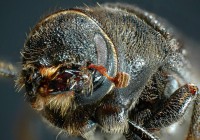Cowabunga, dude!: the hidden secrets of the western painted turtle genome

There is something amazingly captivating about turtles: those slow, long-living, hard-shelled creatures, which look very much like how you’d expect a miniature version of some dinosaur to look. They have inspired artists for many years, and continue to do so, from the Mock Turtle in Lewis Caroll’s Alice’s Adventures in Wonderland, through the impressive, world-carrying… Read more »



